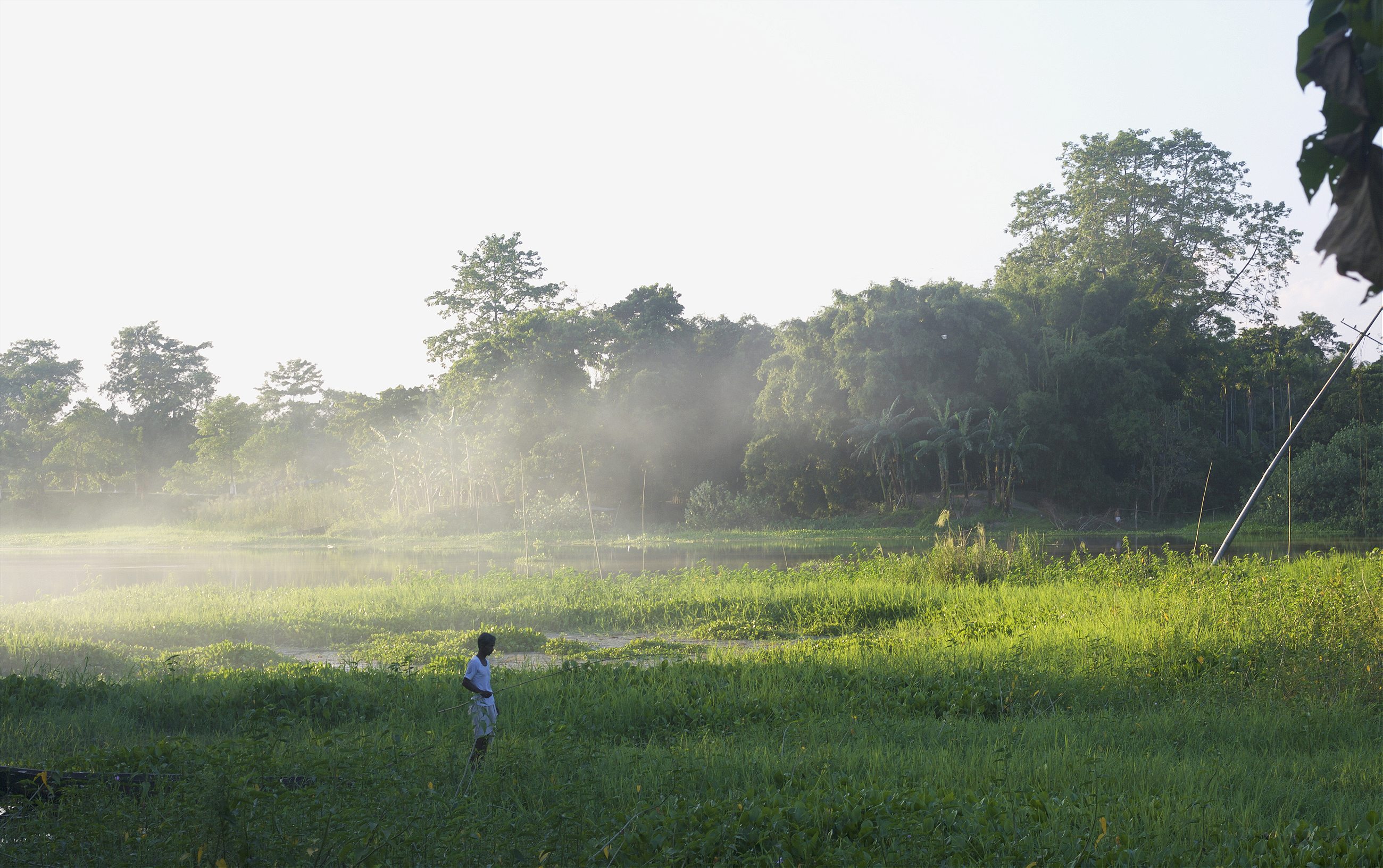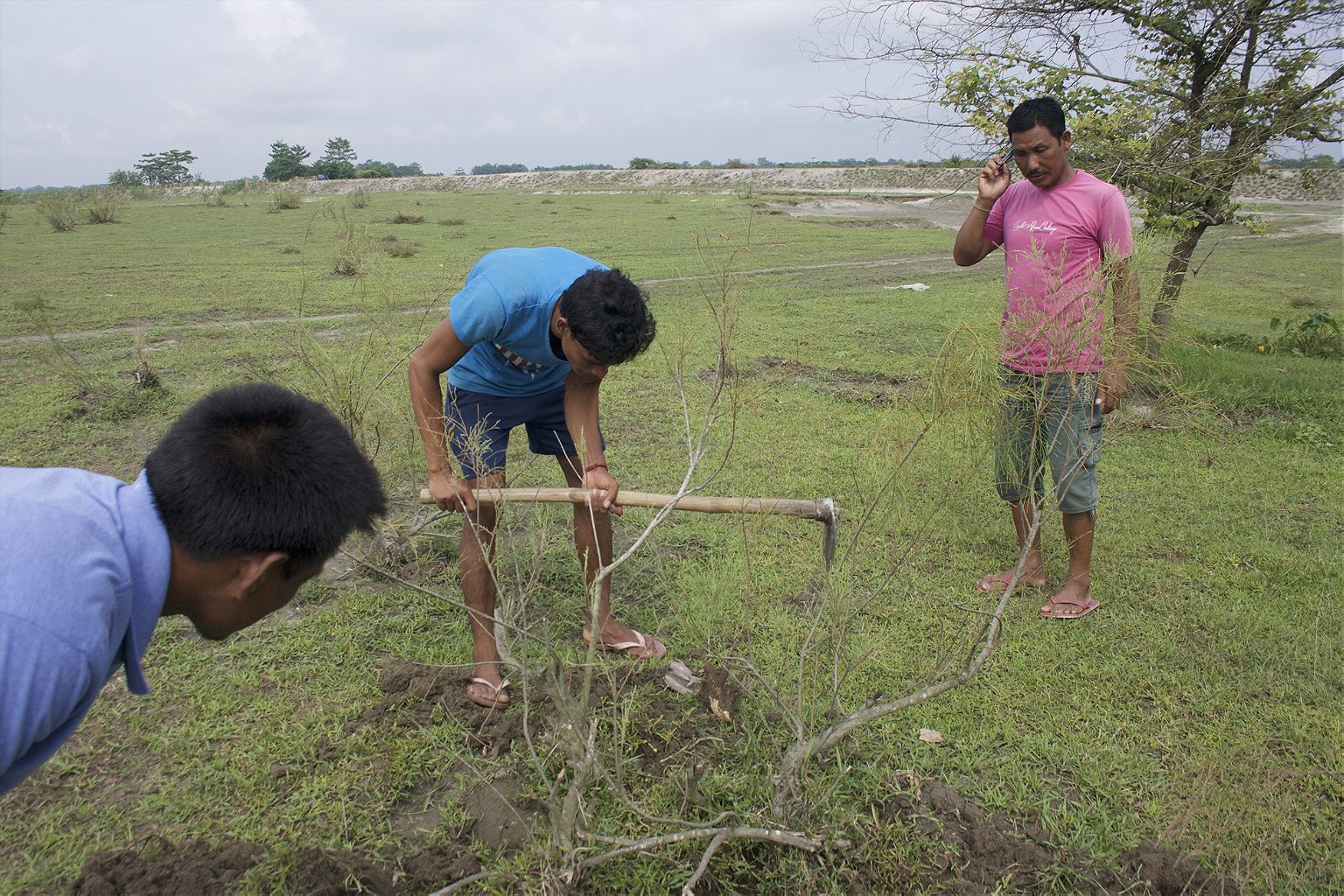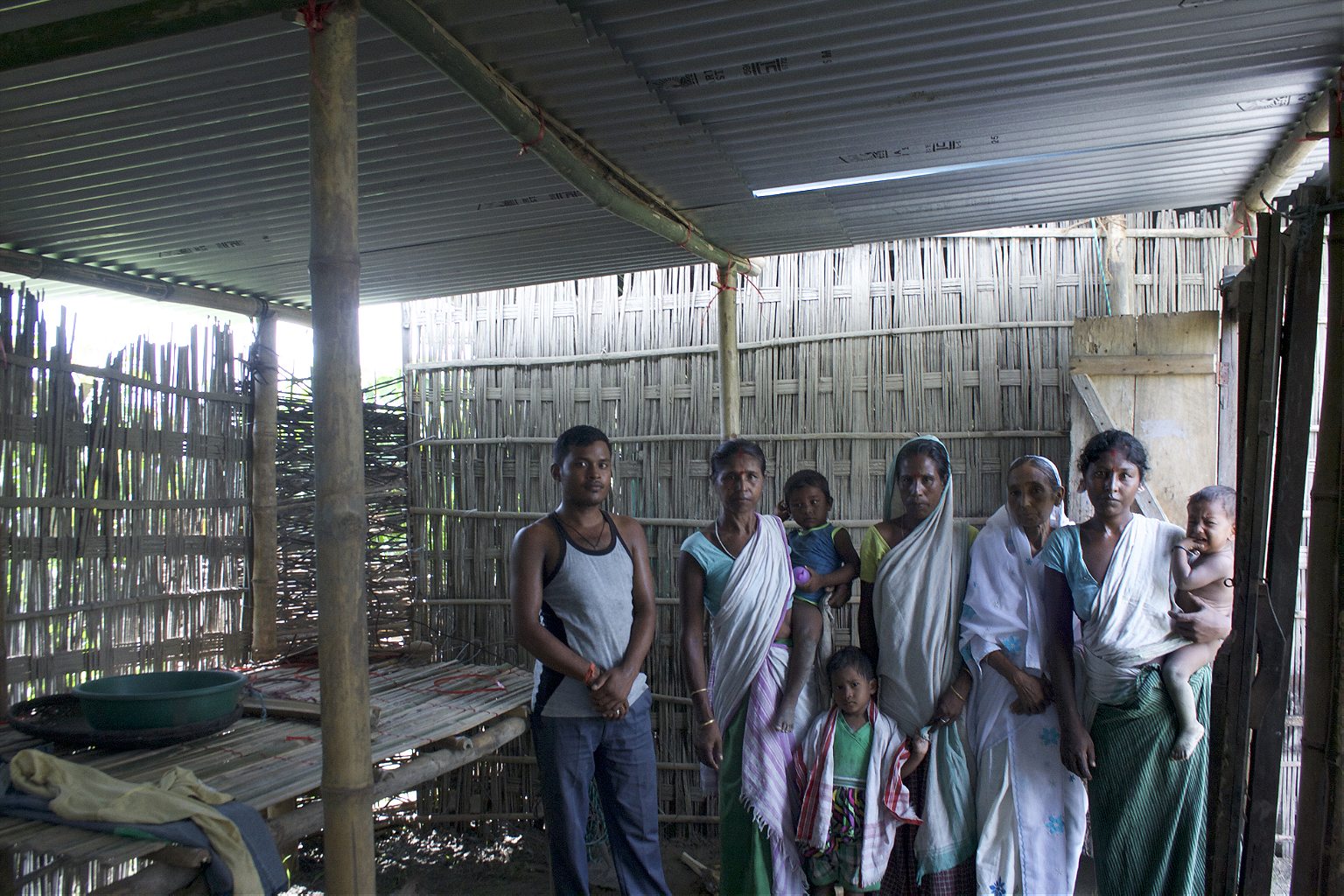Climate change is terrible.
During the meals I eat with Milanjyoti Kuli, I am made to chew on my chicken bones. “Calcium is not for wasting!” he insists, and watches me to the end, until every bone on my plate has been thoroughly gnawed on. The chicken bones I don’t mind so much. The beetles are a little harder to swallow.
Milanjyoti is a resident of Chopori Kuli, a Mishing tribal village in the north of Majuli Island. The island, which is part of the Indian state of Assam, is the largest river island in the world, and is home to five ethnicities, more than a hundred species of plants, and plenty of endangered fauna, all of whom find themselves sharing an increasingly cramped home. The island has shrunk to less than half of its original size during the last century, from roughly 500 square miles to about 150 square miles. In India, it is widely referred to as the shrinking island of the northeast.
Two years ago, Milanjyoti and his friends realized that the beetle lepidiota mausueta, locally known as the hati-puk, had begun preying on their crops. In the past, the Siberian crane, which preys upon the beetle, kept the hati-puk population in check. But climate change has led to shorter winters, causing the migratory pattern of the bird to shift. Today, the hati-puk flourishes on Majuli. The beetle population grows especially strong in the months of March and April, thriving in the hot sand caused by prolonged summers. These days, summers extend till August instead of June, and it is possible to find hati-puk in abundance till then.
“It eats the root of the plant, kills its energy, kills its soul,” says Milanjyoti. “I lost half of my crop to the hati-puk, but I saved the rest just in time.”

After the beetle massacred his crop, he decided he would grant it no mercy. Taking a novel approach, he opened a restaurant in his village in which he caught, cooked, and served more than 2,000 hati-puk a day. He calls it the Pestaurant, a name that he came up with while watching a TV ad for pesticides. The Pestaurant is only open during the summer months, when, you could say, hati-puk are in season. But even when the restaurant is shuttered, Milanjyoti Kuli still eats the occasional beetle that crosses his path.
As Milanjyoti recounts the genesis of the Pestaurant, villagers nearby nod in agreement. One man points at his large stomach and says it’s full of hati-puk. An old woman says that it can be eaten with herbs. Another says it goes well with apong, the local Mishing rice beer. The inhabitants of Chopori Kuli have waged a battle on the hati-puk, and for now, they stand victorious.
“The first time we ate them, we were scared. But Milanyoti never got sick,” says Binod Kuli, sous-chef at the Pestaurant.
“The whole world will eat hati-puk,” the village head says triumphantly, and everyone nods in agreement. “They say it has a lot of Vitamin C. Good for everyone,” he adds.
A plate with a curry of lentils and hati-puk is brought out, a few beetles floating conspicuously under a customary garnish of coriander seeds. They do not taste distinct, but add a pungent, atypical smell to our meal. I swallow my beetle whole with my first and only helping.
The hati-puk committee discusses a menu. Someone proposes boiled hati-puk with yam, but everyone else disagrees. “It releases a funny smell with water,” Milanjyoti tells me. “But fried, it is a feast.”


The hati-puk is only one of Majuli’s challenges; displacement, loss of land, and shifts in labor patterns are bigger hurdles for the island’s residents. The river island is situated on the confluence of the Brahmaputra and its tributary, the Subansiri. One of the most powerful rivers in the world, the Brahmaputra has been known to change course without notice, and has defined Assam’s fate for centuries. Combined with the rainfall in Assam—it receives about 80 percent of India’s total annual downpour—the state has been victim to extreme floods and erosion for decades, the scale of which has increased in the past 50 years. Parts of the island are lush with forests and crops, while others remain barren, wiped out by recent erosion.
During this year’s floods, more than three quarters of the island lay submerged in water, and three miles of land were lost on all sides. The worst floods in more than a decade, they have affected 200,000 people on Majuli. Dozens of people have died in the floods. In Ahatguri, one of the largest clusters of villages on the island, half of the residents were displaced or killed just this year.
“It took away the theater!” says a young boy in Samaguri, the largest hit village in the region, yelling indignantly at a puddle of water outside his house. Schools have been destroyed, teashops swept away, and livelihoods destroyed by the water.
Today, the floods have receded, but the effects remain. Farmers build makeshift shelters and search for forms of sustenance in their new lands. After this year’s floods, 53 families remain in Samaguri out of an original 300. The people of Majuli refer to Samaguri as the “village of dust” and “the other side,” indicating straits so dire, there may be no coming back from them.
In Salmora, a village known for its generations of potters, Shyam Biswas’s fingers are stiff from fatigue. The erosion has left the soil in Khalmora unfit for pottery, leading to a large number of potters losing their professions. “Everyone said I had magic in my hands. People would come from all over Assam to buy my pots,” he says. “My wife married me for riches, and now all I have to give her is a makeshift shed filled with melting mud.”

In destroyed villages like Samaguri and Salmora, medicine is unavailable and sanitation is scarce, causing many people on the island to now suffer from widespread illnesses and malnutrition. For the people of Majuli, who have been self-sufficient for centuries, these adversities are sudden and difficult to comprehend.
In early September this year, Majuli was recognized as the first river-island district in the country by the Indian government. In the past, the island was absent in the administrative map of India, and has been ignored along with other indigenous regions in the Northeast. Its new designation means that Majuli will be governed by a specific set of laws that address its various climate-related concerns, and also give the people of Majuli the right to appeal to both the local and national government. Majuli’s changing status was accompanied by promises of relief by the environmental bureau in New Delhi. The district chief of Majuli visited the islands while I was there right after the announcement and spoke to local farmers, the first time a government official had addressed Majuli in over sixty years.
“Majuli is now an official segment of the Indian state. We must save it,” he said, and while most cheered, some remained skeptical.
In no time, Majuli will become Goa
“The government grants funds for embankments, but the floods come before the funds,” says Sandipto Das, a development researcher from Guwahati, the capital of Assam. “We keep waiting for one man’s signature, and homes get swept away. This will not change,” he says.
Meanwhile, multinational firms from the cities have started arriving on Majuli, promising to build bridges in return for land rights, leaving locals confused.
“They will commercialize the island, bring tourists in, and suck it dry before it finally dies out,” says Parag Mohanty, a local activist. “In no time, Majuli will become Goa,” he adds, referring to the destruction of the rural economy in Goa and its commercialization as it was transformed into a large tourist destination.
During the full moon in Majuli, locals flock to the village theater to watch a mythological play that lasts eight hours. At 3 a.m., the play ends, and everyone prays to a figure of a man in lion mask drenched in red light. This is Lord Narsimha—Vishnu’s seventh avatar. The man bows, and promises to return at the end of the Kala Yuga — the age of destruction in Hinduism—and promises to save the people of Majuli from their fates. It could be 200 years ago in Majuli on this night and every other, but the lands disappearing from each corner remind us that it is not.
When I return to Milanjyoti’s house, it is almost dawn, and everyone lies on the floor, full of rice beer.
“I am sure I will attain good fortune,” says Mukundo, Milanjyoti’s son. “I am handsome!”
The other men laugh; the women sigh in resignation. Milanjyoti speaks quietly from a corner.
“Let Majuli remind you of one thing,” he says. “Beauty and good fortune don’t always go together.”